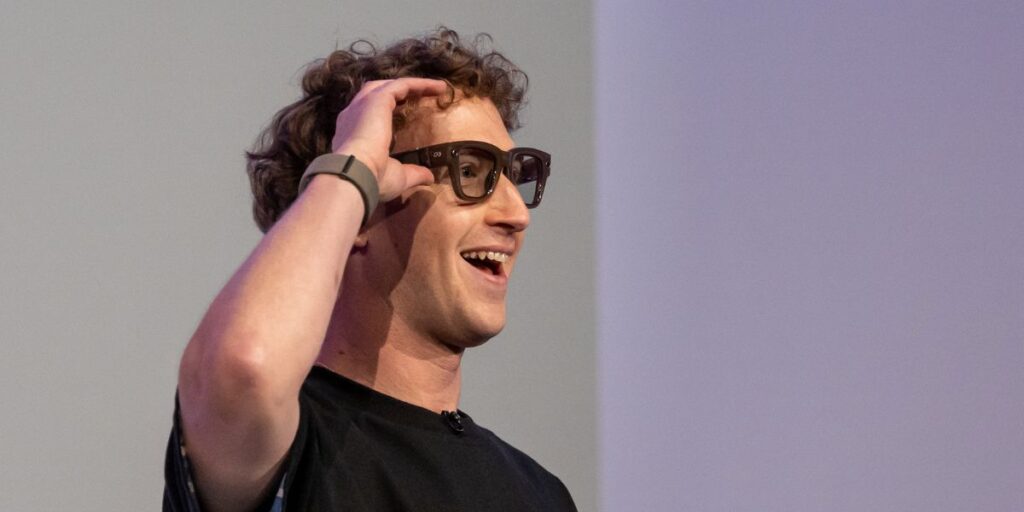
In a move poised to transform personal technology, Mark Zuckerberg recently introduced two innovative devices at the annual Connect conference: the Meta Ray-Ban Display glasses and the Meta Neural Band. These cutting-edge products promise to integrate the digital world with our daily lives more seamlessly than ever before, allowing users to remain present without the constant distraction of smartphones.
The Meta Ray-Ban Display glasses are not your typical wearable technology. Featuring a high-resolution, full-color in-lens display, these glasses provide information without obstructing the user’s view. Imagine the ability to check messages, view photos, or receive real-time translations with just a glance, all without needing to reach for your phone. This discreet, off-to-the-side display is designed for brief interactions, ensuring users remain engaged with their surroundings. It signifies a leap forward from merely attaching a screen to one’s face, introducing a new category of technology that combines computing, AI, a camera, and a display into a single, stylish, and comfortable device.
Despite a few technical hiccups during the keynote presentation, attributed to poor Wi-Fi—a common issue many face daily—the unveiling marks a bold step for Meta. The glasses are controlled through intuitive gestures, a feature that sets them apart in the tech landscape.
Revolutionizing Interaction with the Meta Neural Band
Complementing the glasses is the Meta Neural Band, an electromyography (EMG) wristband that translates muscle activity into digital commands. This pioneering wearable allows users to control the glasses with subtle hand movements, eliminating the need for touchscreens or buttons. The interaction feels almost magical, offering a truly effortless experience. Developed over years of EMG research and tested on nearly 200,000 participants, the band ensures functionality for a diverse range of users. Its sensitivity is such that it can detect movement even before it becomes visually apparent, providing significant accessibility benefits for individuals with mobility challenges.
Advanced Features and Real-World Applications
Together, the glasses and neural band unlock a suite of advanced features. The integration of visuals with Meta AI means the glasses can now provide step-by-step instructions, rather than merely reading them aloud as previous versions did. Pedestrian navigation offers turn-by-turn directions directly on the display, while live captions can translate conversations in real time, effectively breaking down language barriers. Everyday tasks such as messaging, video calls, and music playback are enhanced with a new level of hands-free convenience.
Context and Industry Impact
The announcement comes at a time when tech companies are increasingly focused on creating devices that blend into daily life without causing disruption. Meta’s foray into augmented reality (AR) and wearable technology reflects a broader industry trend towards more immersive and intuitive user experiences. According to tech analyst Sarah Thompson, “Meta’s new devices represent a significant shift in how we interact with technology. By integrating AI and EMG, these products offer a glimpse into the future of personal computing.”
Historically, the tech industry has seen various attempts to introduce AR glasses, but many have struggled with user adoption due to bulkiness and limited functionality. Meta’s approach, combining style with advanced technology, may well overcome these hurdles, setting a new standard for wearables.
Looking Ahead: Implications and Future Developments
The move represents a strategic pivot for Meta as it seeks to redefine itself beyond social media and into a leader in AR and AI technologies. The potential applications of the Meta Ray-Ban Display and Neural Band are vast, ranging from personal use to professional environments where hands-free operation is crucial.
As Meta continues to refine these technologies, the implications for both consumers and industries are profound. The ability to interact with digital content in a more natural and integrated manner could revolutionize fields such as healthcare, education, and remote work. Meanwhile, the focus on accessibility highlights the potential for these devices to empower individuals with disabilities, offering new ways to interact with the world.
In conclusion, Meta’s unveiling of the Ray-Ban Display glasses and Neural Band at the Connect conference marks a significant milestone in the evolution of personal technology. As these devices become available, their impact on daily life and industry practices will be closely watched, potentially setting the stage for the next wave of technological innovation.







